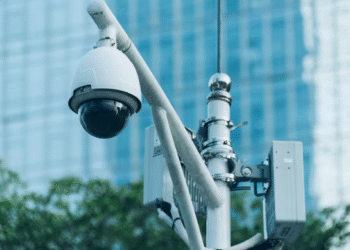I remember sitting in a clinic years ago, watching my physician frantically jot down notes while I described my symptoms. There was this chaotic ballet of eye contact, pen scribbles, muttered affirmations, and the occasional, “Wait, what was that last thing you said again?” It was clear: he was trying to listen, think, and write—all at once. A true multitasking hero, but one overwhelmed nonetheless.
That was then. Today? Doctors, therapists, and clinicians are ditching their pens for something smarter: speech to text tools that let them take notes on speech directly, hands-free. But the question that naturally comes up is—how safe is it to trust these apps with such sensitive data?
Spoiler alert: a lot safer than you might think.
The New Age of Clinical Note-Taking
The shift from scribbled charts to clean, digital records isn’t just about convenience—though let’s be honest, that’s a huge perk. It’s about accuracy, efficiency, and most importantly, patient safety.
Enter the speak writer—a feature-packed speech to text companion that lets healthcare professionals document in real time, often during patient sessions. These apps don’t just transcribe; they store, encrypt, and secure that information in ways that old-fashioned paper never could.
And no more, “I’ll update the chart later.” Because let’s face it, “later” often means “never.”
Security Isn’t a Buzzword—It’s a Mandate
Now, when we’re talking patient data, we’re talking big stakes. Diagnoses, prescriptions, therapy session notes—it’s all confidential, and rightly so. So how do these notes on speech apps make sure our data doesn’t end up in the wrong hands?
Let’s break it down:
1. End-to-End Encryption
Good apps—scratch that, great apps—encrypt data the moment it’s spoken. Think of it like sending a love letter sealed in a locked box that only the recipient can open. Whether it’s a general note or a full patient consultation, the encryption ensures no one can eavesdrop in transit.
2. HIPAA Compliance
If you’re in the U.S., you’ve probably heard of HIPAA (Health Insurance Portability and Accountability Act). It’s the rulebook for how patient info must be handled. Leading speak writer and notes with voice apps stick to these rules like glue, ensuring that everything from data storage to access control is legally airtight.
3. Cloud with Guardrails
Cloud storage might make some people nervous—“You mean it’s floating somewhere out there?” But here’s the deal: secure servers with multi-factor authentication, role-based access, and daily security audits are often more protected than the average desktop in a busy office.
And let’s be honest—how many paper files have been lost in office moves, floods, or the dreaded coffee spill?
Real-Life Uses That Hit Close to Home
Let me give you a real-world example. Dr. Aarti, a general practitioner from Bangalore, started using a speech to text app last year. Between back-to-back appointments, she’d been falling behind on documentation. Now, she simply speaks her notes—sometimes even while walking between exam rooms—and lets the app do the rest.
She told me, “I get home earlier, I sleep better, and I don’t wake up at 3 a.m. thinking, ‘Did I record that blood pressure correctly?’” The app stores her notes with voice securely, allowing her to edit them later if needed, without compromising patient privacy.
Or take Dr. Mike, a physical therapist in Austin who works with elderly patients. He uses a speak writer to capture rehab progress while maintaining eye contact—something his patients deeply appreciate. “I’m not buried in a laptop anymore,” he said. “I’m actually with them.”
What to Look for in a Secure Speech to Note App
Not all apps are created equal. If you’re a healthcare provider—or even a medical student practicing safe habits early—make sure your app checks these boxes:
✅ HIPAA or regional compliance (GDPR in Europe, etc.)
✅ End-to-end encryption
✅ Offline recording with secure sync
✅ Optional two-factor authentication
✅ Editable transcripts with change history
✅ A user-friendly interface (because clunky tech is the fastest way to burnout)
Apps like Speech to Note tick all these boxes and more. It’s built with healthcare professionals in mind—streamlining workflow without compromising on data integrity.
A Word on Trust
Let’s not kid ourselves. Trust is earned, not downloaded. But when your notes on speech are locked tighter than a bank vault and your notes with voice are instantly searchable, backed up, and editable—it’s a trust you can feel.
Besides, wouldn’t you rather speak and get your notes instantly, than try to decipher your own handwriting hours later?
The Bottom Line
Technology, when done right, doesn’t replace the human touch—it enhances it. With the right speech to text app, healthcare professionals can focus more on healing and less on documenting. The future of clinical practice isn’t just efficient—it’s secure, smart, and spoken.
So if you’re still juggling a pen and paper while patients are pouring out their hearts, maybe it’s time to upgrade your toolkit.
Ready to Upgrade Your Note-Taking Game?
Whether you’re an MD, therapist, nurse, or med student—Speech to Note has your back. Record securely. Transcribe instantly. Sleep peacefully.
Download Speech to Note on the Apple App Store or Google Play Store and speak your way to smarter notes.






